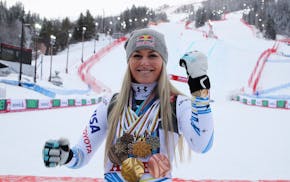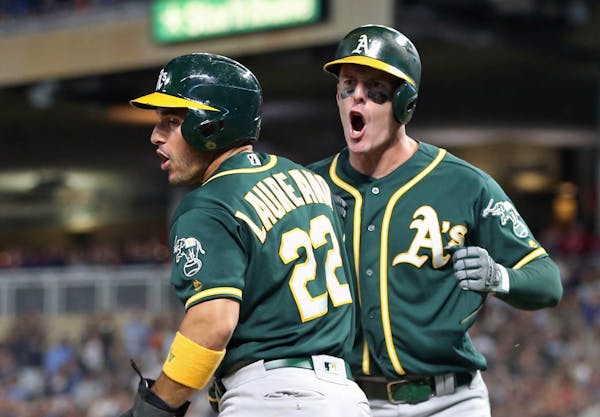To celebrate the anniversary of the moon landing, let's remember another once-in-a-lifetime event: The Twins making a July trade that mattered.
Sometime in the next 10 days, they will probably deal a prospect you've barely heard of for a reliever you had barely heard of before rumors began percolating this month.
Amid the usual calls for the Twins' front office to "be aggressive" and "reward this team" is the reality of the midseason trade market:
It's more important for the Twins to avoid regret than to earn momentary praise.
Do the Twins need another reliever or two? Yes, as was demonstrated, again, in their 5-4 loss to Oakland on Saturday night at Target Field.
But at what cost? The player acquired in a midseason deal often spends no more than two months with his new franchise, and most deadline trades fail, either because the incoming player doesn't perform well enough or because the team doesn't reach its goals.
After stumbling through most of the decade, the Twins finally look like they have built a worthwhile future. The big-league team is good enough to panic the locals by having "only" a narrow lead in the division in late July, and the farm system is strong.
Trading a top prospect who is part of their long-term future for a star-quality pitcher might generate momentary excitement, but the Twins could regret that kind of deal for a decade.
What's the right kind of trade for this franchise right now? Look to 2003, when Terry Ryan pulled off the best trade-deadline deal in recent franchise history. He did so by using insider knowledge to fool the market, or at least the Toronto Blue Jays.
The deal he cut perfectly threaded the needle, giving the Twins a key player who helped them win two division titles before going into decline, and costing them a player who was more highly valued outside the organization than in.
The Twins of July 2003 would have laughed at the notion that the 2019 team is in trouble. The 2003 Twins were coming off a trip to the ALCS in 2002 but had played horribly and were 7½ games out of first place at the All-Star break.
That's when Ryan traded Bobby Kielty for Shannon Stewart.
Kielty was the kind of player who fit the analytics model of the day. He could hit for power and draw walks. Stewart was an old-school leadoff man who hit line drives and stole bases.
Kielty was coming off his one above-average big-league season. In 2002, he produced an .890 OPS.
The Twins weren't fooled by his past statistics. In 2003, they saw a sluggish player on a sluggish team. In Stewart, they saw a player with a strong work ethic who could enliven the top of the order and be a role model to a still-young team.
Stewart would help the Twins surge to a division title. Kielty would never again amass an OPS of .800 or better.
The lesson: In every organization, there are prospects and young players who are more highly valued in baseball at large than they are internally. Derek Falvey and Thad Levine have to figure out which of their prospects reside in that category.
If the Twins trade a prospect for a reliever whose contract is up at the end of this season, you can bet that was not a prospect they highly valued.
There is nothing worse for a franchise than to spend years developing a player, only to see him thrive elsewhere. There's no need to mention David Ortiz or Ryan Pressly here, so I won't.
"We can make arguments that trades can help a team," manager Rocco Baldelli said. "You can also make arguments within this clubhouse that there are trades that shake things up, as well. The grass isn't always greener. We have a great team here with great players and for me, thinking about that part of the game, the answer is not looking outside the organization to help ourselves."
They should look outside. They just shouldn't trade away anybody who will remind them of Ortiz.
Jim Souhan's podcast can be heard at TalkNorth.com. On Twitter: @SouhanStrib. • jsouhan@startribune.com

Souhan: Lindsey Vonn returns to U.S. Ski Team

Souhan: Jones isn't the best Vikings running back, but he might be the most likeable

Cashman is back, and he's money against the Jaguars

Souhan: The Sam Slide is here. How will the Vikings handle it?


